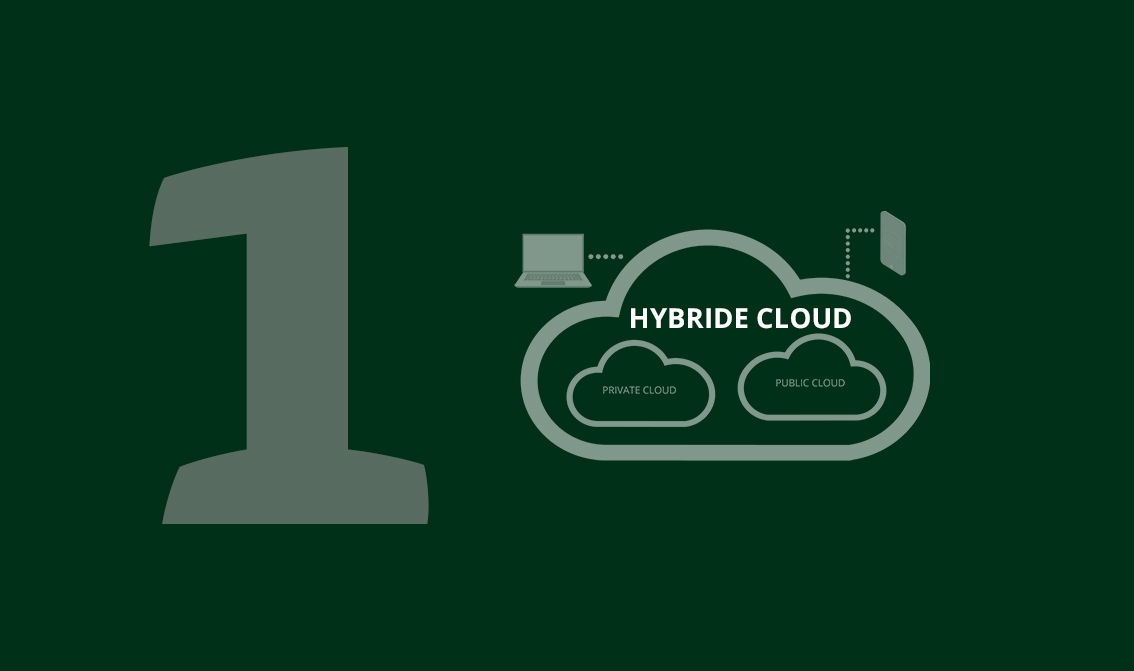
The new enterprise IT: hybrid, complex* and out of control?
We welcome you to our new blog on enterprise IT. Here we address numerous questions around hybrid IT. One of the most pressing is: Is our IT still controllable and manageable? We answer this in our first blog article.
They are smart, flexibly scalable, bookable with the company credit card in just a few clicks and ready to use: We are talking about increasingly alluring cloud offerings such as Salesforce, Microsoft 365, or Confluence. In companies, they are often used by business units to improve marketing, customer support or departmental collaboration. Often, they sneak into companies without the knowledge of those responsible for IT.
We recently asked a company’s IT department if it was using applications from the public cloud. The answer was: No, we do not. Even after further questioning, they stuck to their answer. However, a detailed IT analysis later revealed that nearly 50 different public cloud services were in use across the company, ranging from HR and collaboration tools to e-commerce.
Dear readers,
With this anecdote from the world of consulting, we welcome you to our new Corporate IT blog. Together with the IT consultancy Aequitas Affinity, we will be addressing many of the questions that IT leaders, CEOs and C-level executives face in an increasingly complex IT landscape within their own organisations. One of the most pressing questions is: Is our IT still manageable and controllable?
This is indeed a valid question. The cloud services mentioned above are just the tip of the iceberg of an increasingly complex hybrid IT environment that has evolved in many organisations over the years. The starting point was the outsourcing of parts of corporate IT to one or more on-premises providers. Later, private cloud services from outsourcing providers were added, and then the advent of Software as a Service (SaaS) solutions, such as Google Office or Expedia for travel bookings, caught the interest of enterprises. For some, this marked their entry into the public cloud years ago, while others took the plunge more recently, often driven by the COVID-19 pandemic and the need for quick solutions to current challenges.
Today, what we call complex hybrid IT is a reality in almost all organisations, namely the coexistence of in-house IT, on-premises, private and public cloud solutions. When it comes to outsourcing, companies are no longer dealing with one or two on-premises providers, but with a multitude of them. Contractual frameworks, often thousands of pages long, have become increasingly complex.
Unsurprisingly, this conglomeration of different sources and forms of IT sourcing is creating challenges that are already evident in many places. Rapidly adopted cloud solutions are not automatically integrated into the organisation’s IT infrastructure. IT islands are created, making it much more difficult to use applications. Employees have to enter different passwords, data isn’t available across all applications or is transferred with errors. In addition to this, speed of the purchasing process often leads to the acceptance of contract terms without a thorough review. This includes pricing models. We know of one company that had to pay a seven-figure sum because users of a weather data service were unaware that there were separate charges for each calculation. While cloud services offer flexible billing options, they often come at a significant cost. Additionally, every time a cloud solution is deployed, new security risks are introduced, potentially giving hackers another gateway into the organisation.
There is no turning back
Equally unsurprising is the fact that these risks are causing sleepless nights for IT managers, as well as CEOs and senior executives. Yet it’s clear that this trend cannot be stopped. Nor would it be wise to do so, as many cloud solutions offer businesses significant benefits and the flexibility they need for the future. This makes it all the more important not to let the complex hybrid IT environment grow unchecked. Instead, it should be systematically assessed to identify where the greatest risks lie. Strategies must then be developed to keep the risks under control, taking into account the impact on vendor management, contract negotiations, IT security and IT staff skills.
Our blog aims to raise awareness of these new challenges among CEOs, executives, and IT leaders. It will raise awareness, present solutions, and facilitate discussion. So, if you have specific questions or would like to share your experiences with us and our readers, please write to us at hybridit@axxcon.com.
Yours sincerely,
Your IT-Sourcing Team
*The term “complex hybrid IT” refers to a reality that already exists in modern companies and is expected to increase in the future: the coexistence of in-house IT, externally sourced on-premises, private and public cloud solutions at different levels of delivery (IaaS, PaaS, SaaS, etc.). In this context, the vendor landscape within the enterprise is becoming increasingly heterogeneous and complex: Focusing on the key areas of data centre, workplace, network, applications, and cloud alone, enterprises can quickly find themselves working with more than ten service providers in a multi-sourcing environment. When business units also adopt solutions from the public cloud, the resulting application and security issues become even more pronounced.



